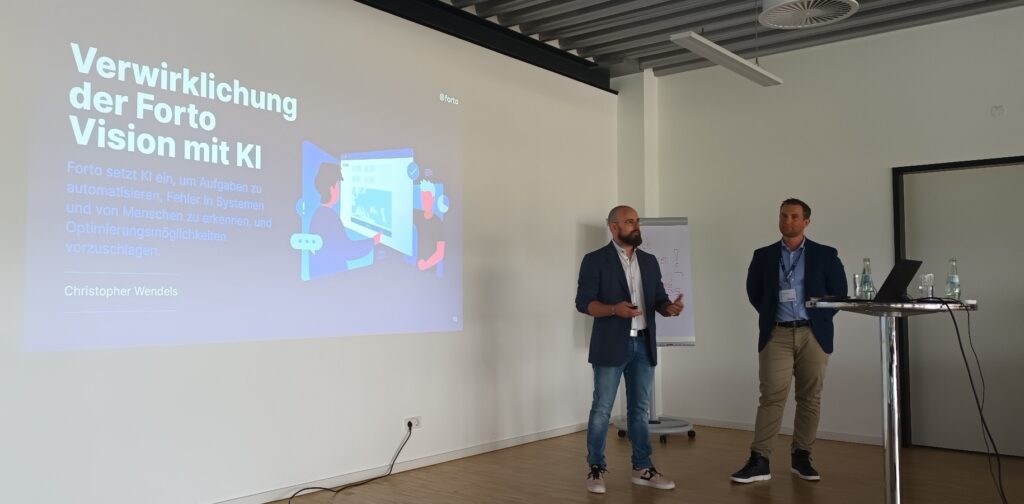Supply chain visibility is an increasingly sought after ideal in the logistics world, from industries of all kinds. With advancements in technology and digitization changing the inner workings of the business world at large, logistics partners linked through the supply chain have come to expect a higher level of communication, as well as easier, faster access to valuable information.
Over the latter half of the 20th century, we’ve watched trade slowly integrate with the digital world, but at somewhat of a slow rate, due to the complex nature of merging old processes with new technology. While the demand for visibility through the supply chain is high, it is not a standard easily reached.
Before we delve into the current state and future outlook on supply chain visibility, let’s break down exactly what is meant by “visibility,” what issues good visibility addresses, and why it is important to supply chain managers and industry professionals.
It goes without saying that the process of turning raw materials into finished products, and then getting them from point A to point B often involves many third parties. The lengthier the supply chain and the more parties involved, the more complicated lines of communication become, the more difficult it becomes to keep all parties apprised. “Visibility,” in this context, is the antithesis of a murky supply chain. In a supply chain with total visibility, all parties involved would have access to pertinent data and information at any time.
The benefits of Supply Chain Visibility — Why does it matter?
While visibility sounds great in theory, is it necessarily good for business, and why? According to a study from the ARC Advisory Group, an international technology research organization, the supply chain visibility and collaboration market is the fastest growing supply chain market, specifically, business-to-business (B2B) solutions.
The pursuit of transparency between partners is not an arbitrary move for the simple sake of incorporating digital processes; visibility actually has a real effect on a company’s bottom line. According to Jeff Dobbs, the global sector chair of diversified industrials practice, aerospace, and defense at New York financial services company KPMG, “obtaining real-time visibility across all tiers in the supply chain can significantly increase speed to market, reduce capital expenditures and manage risk.”
More specifically, the ARC’s study defined supply chain visibility applications as
“providing visibility to the order process (order placed, order adjusted, order accepted), inventory at rest or inventory in motion events, or supply chain risks or providing a standalone supply chain analytics/event management solution not embedded in other solutions.”
Imagine if you were able to lift all of the barriers that block access to information about a shipment, and were then able to share it with any other concerned parties. By lifting these blockages that were never before considered possible, an entire world of possibilities opens up.
When access to data is increased, more information can be derived, which improves the ability to plan, avoid costs, and increase efficiency. In addition to evading costs associated with logistics, good supply chain visibility can also promote operations and project managers’ ability to strategize more effectively, further bolstering company bottom lines by boosting revenues.
For example, if you can lower uncertainty surrounding lead times, you can reduce the amount of inventory required to keep on hand, saving on warehousing and storage costs, and forwarding those savings into a healthier bottom line.
What makes Supply Chain Visibility possible?
Supply chain planning applications, commonly referred to as SCP applications, are the software platforms that allow companies to connect and access these benefits. There are currently hundreds of logistics platforms that offer these kinds of services, and still more emerging all the time, each with various specificities that claim to make them unique from other products.
The software is the link that connects inter-company departments and companies with one another, but the tools that gather the data in which the software shares are undergoing their own revolution, providing companies with data they didn’t have access to five years ago.
One of the most commonly talked about innovations are temperature- and environment-sensing containers made for sensitive, perishable goods like pharmaceutical products. While the industry has employed the use of temperature-controlled containers for decades, we are now seeing “smart” containers entering the market, that are able to record and share this data instantaneously, which is accessible through SCP apps. Other innovations, like Artificial Intelligence-enabled inventory-sorting robots, are also able to collect, store and share data on inventory.
In the logistics world, we refer to this network of these “smart” objects as the Internet of Things (IoT.) In theory, if a company invests in a SCP software, it should be able to integrate IoT innovations, like the above examples, into their business’ operations and manage the newly-mined data derived from these products as they hit the market, all via an SCP app.
What’s the catch?
Yes, when visibility is successful, it is a win-win; everyone benefits from it. The potential is certainly tantalizing and should intrigue any player in the logistics world, but at this point, you would be prudent in wondering, “What’s the catch?” While visibility is an exciting idea, you may not be surprised to learn that it’s much easier imagined than put into action.
With so many products available, and so many disjointed supply chain partners, a problem begins to emerge. Since the successful implementation of these products is dependent on all involved parties utilizing an SCP, there is a lot of collaboration, investment, and planning that goes into the successful implementation of such a system.
If you understand the intricate, web-like nature of the international trade landscape, then you can imagine why achieving full visibility between industry participants could be difficult. Like any widespread integration of new technology, the logistics industry is especially slow to adapt it, due to the network’s complexity.
One example of this is the push to digitize billing in the air freight sector of logistics. Many international airports still don’t accept electronic billing, requiring customers to pay in paper air waybills, which is decades behind the fully-digital passenger side of aviation. With so many e-air waybill software platforms abundantly available on the market, one certainly wonders what it is about logistics that makes it slower to take to electronic processes.
It’s easy to point the finger at industry leaders, but the blame does not lie on any specific party, due to the network-like connectivity of the supply chain. With so many moving parts and the capitalist nature of the software market, a substantial amount of collaboration between third parties has to occur in order to access a high level of visibility between partners.
SCV Tools – What’s next?
Essentially, there are two possible scenarios that may occur as we look into the future of supply chain visibility. Either logistics industry members homogeneously adapt the same software product, which seems like an unlikely scenario considering the variety of options available, or the SCP service companies themselves must build their software to be able to communicate with other third-party software.
For example, if DHL utilizes SCP software from Company A, and a shipper that does business with multiple other forwarders utilizes SCP software from Company B, both software need to be compatible with each other. Otherwise, the entire goal of visibility is missed.
While at first you may wonder what incentive an SCP software company to make their product compatible with other SCP products, if and when logistics companies start implementing these systems in higher numbers, SCPs will likely have to hop on board in order to stay competitive — which is good news if you’re among the logistics community waiting to see how the move toward a digital logistics world unfolds.







